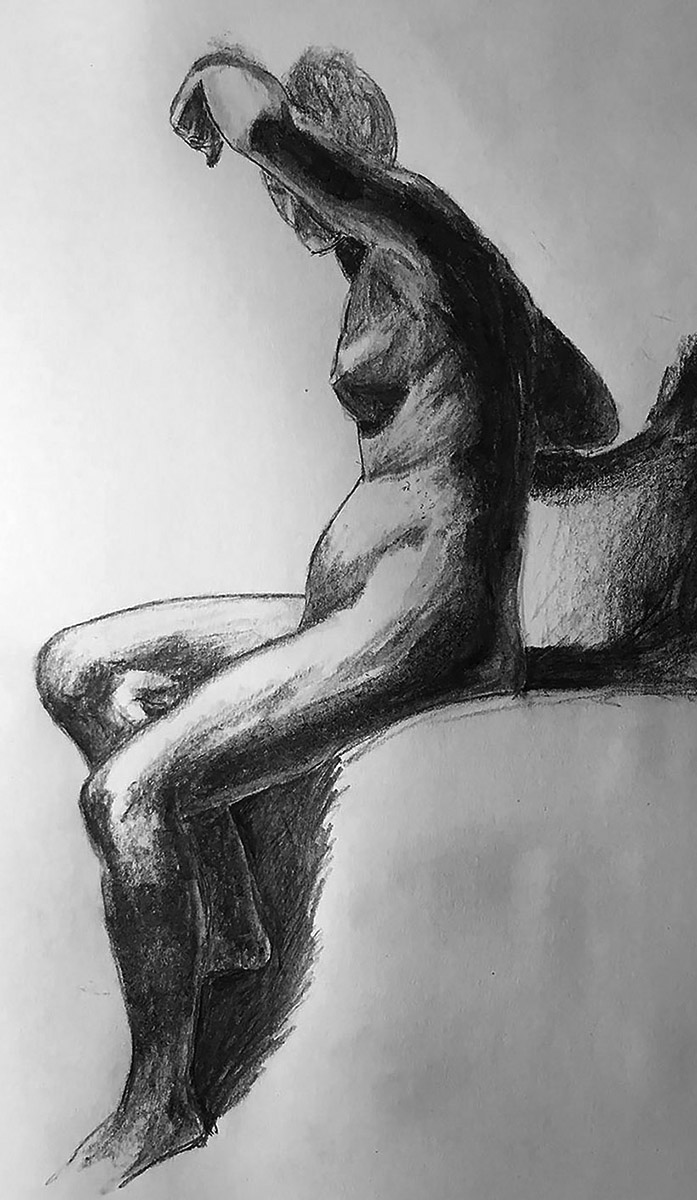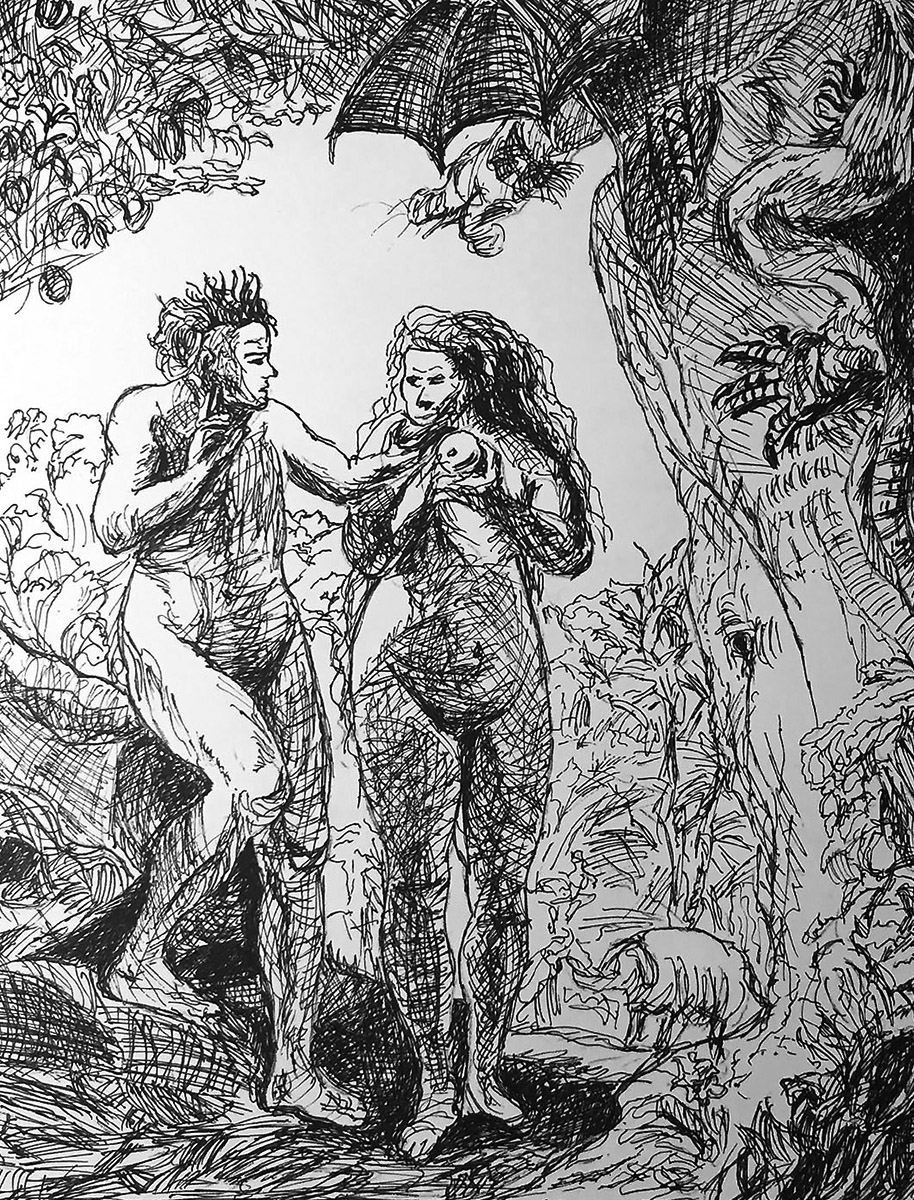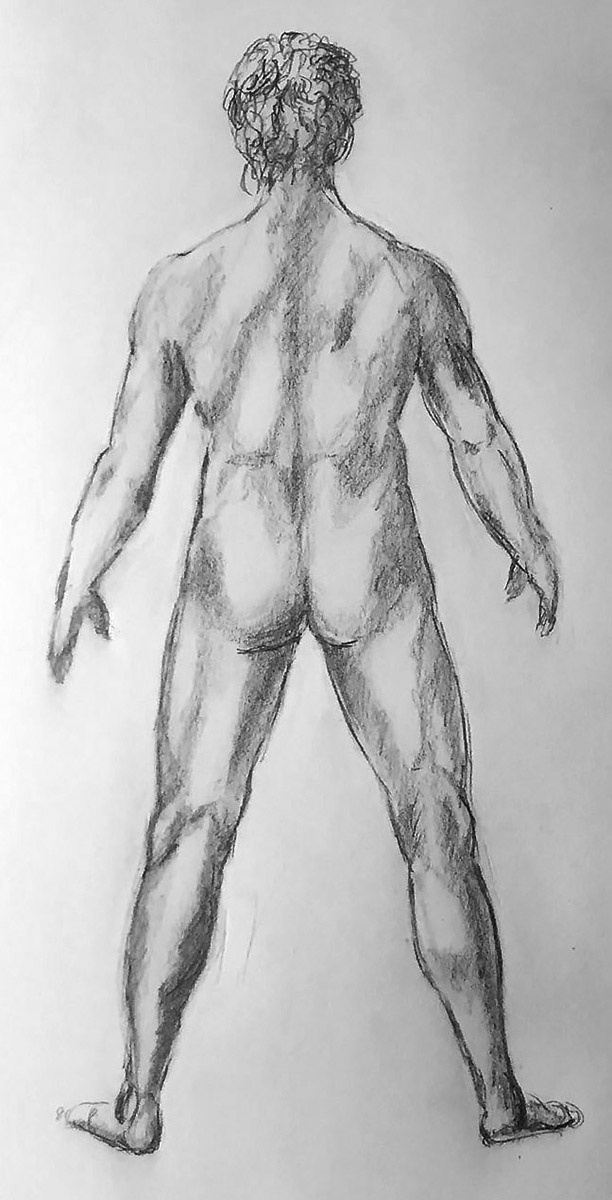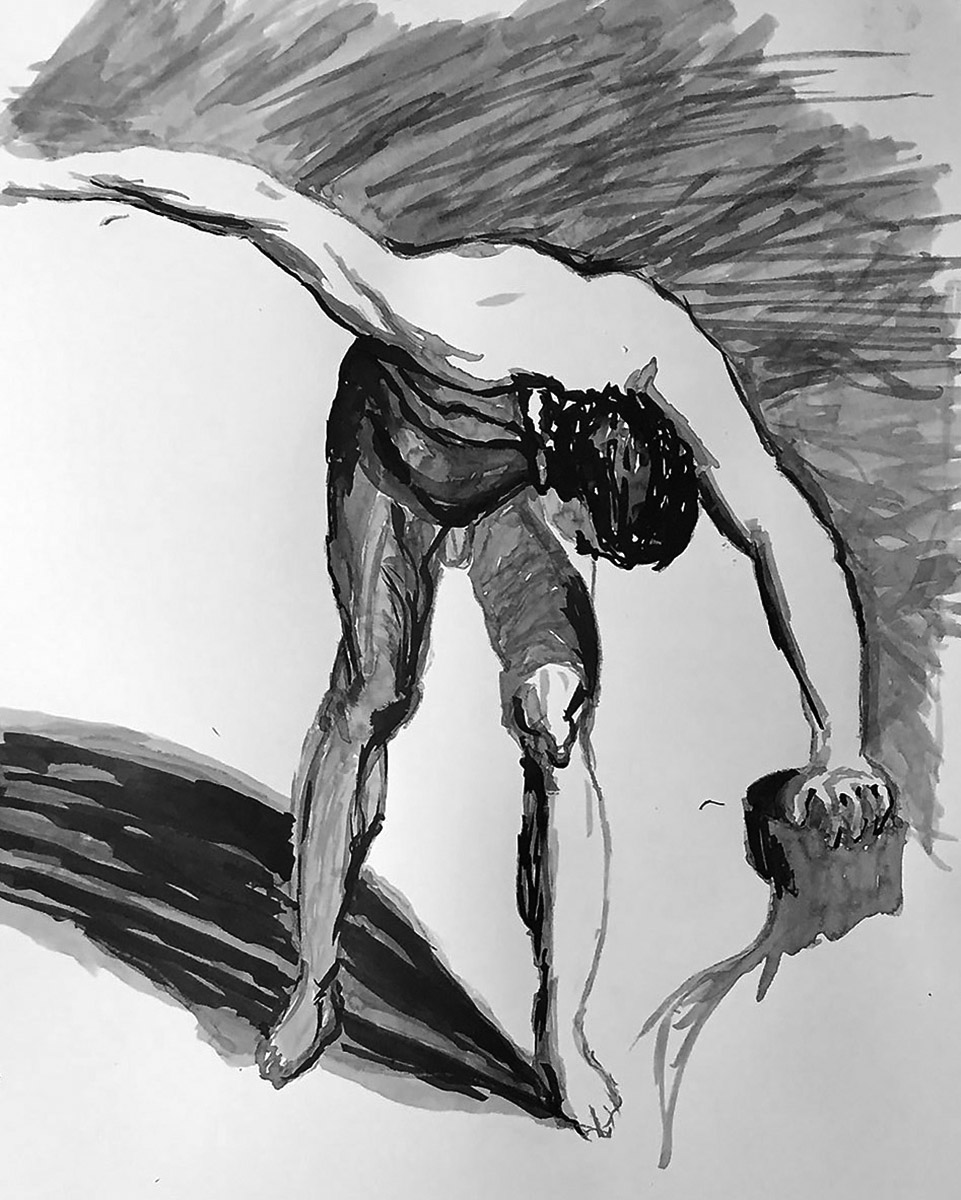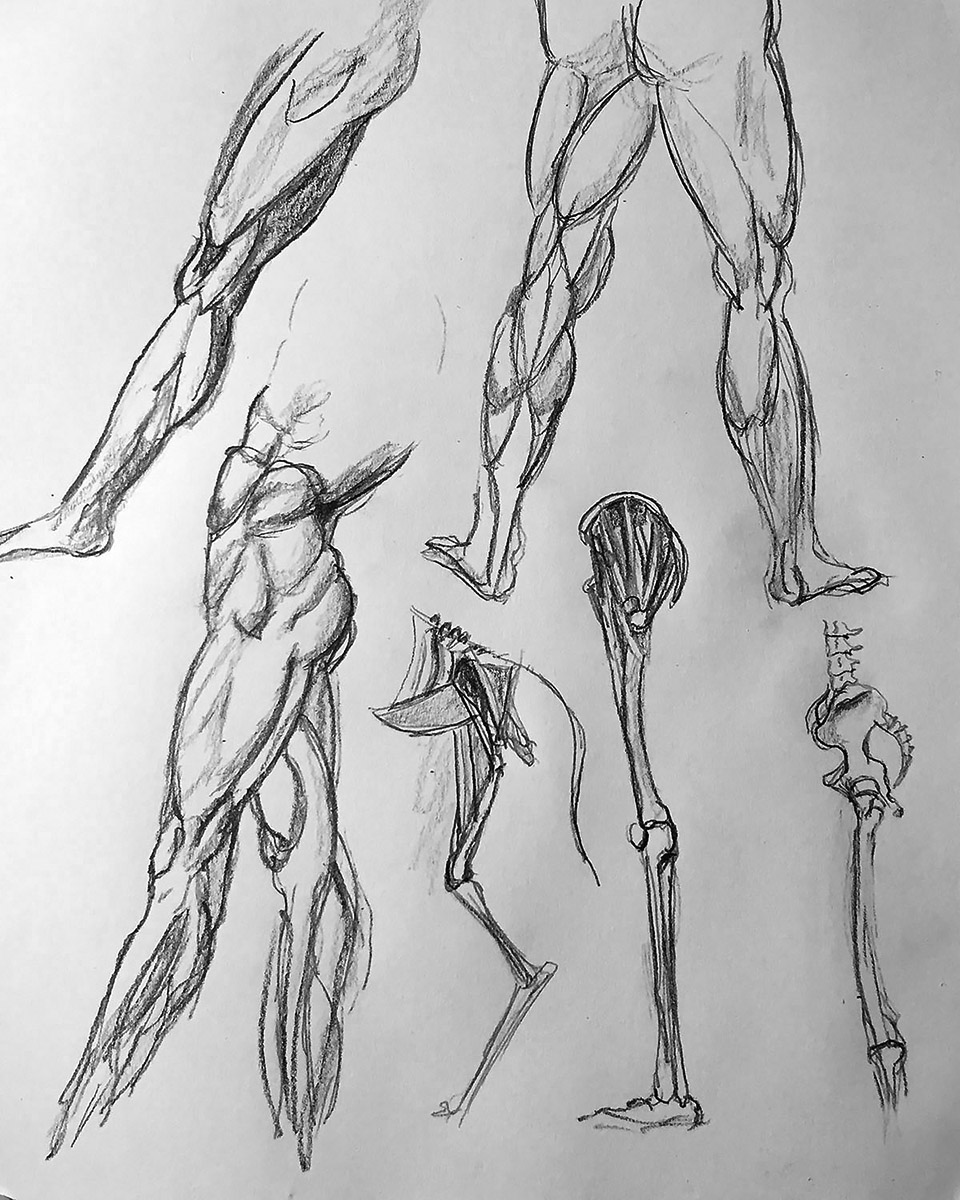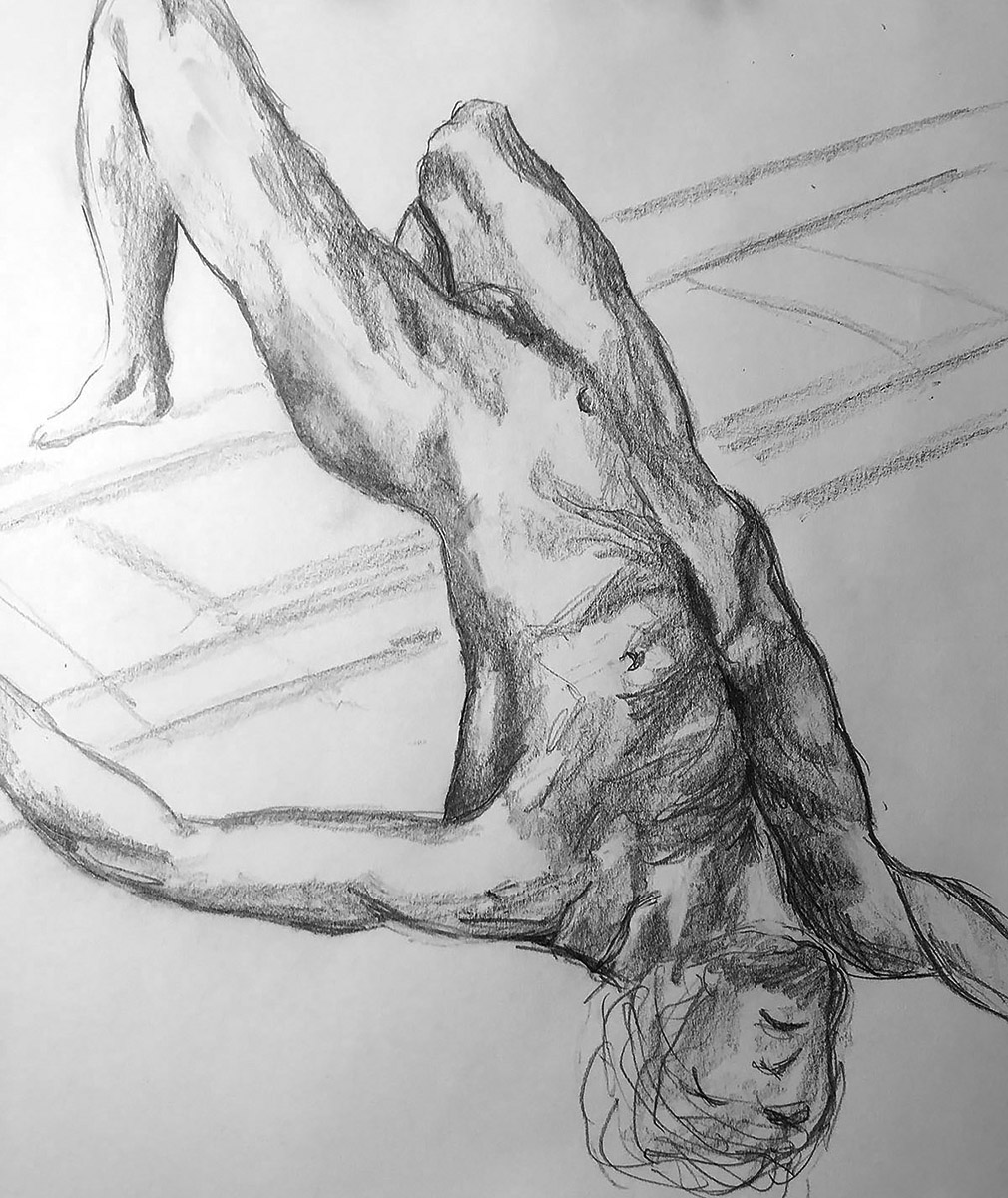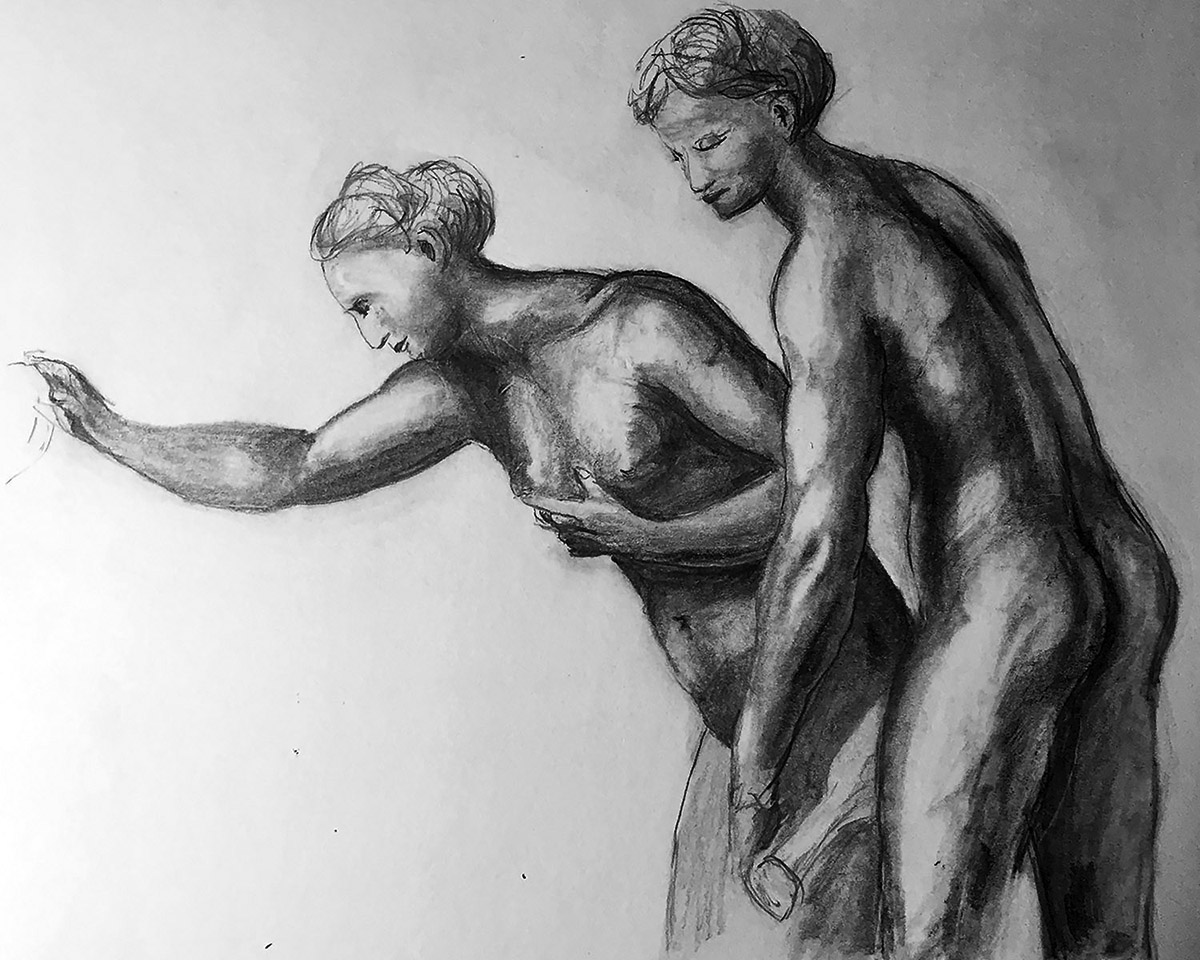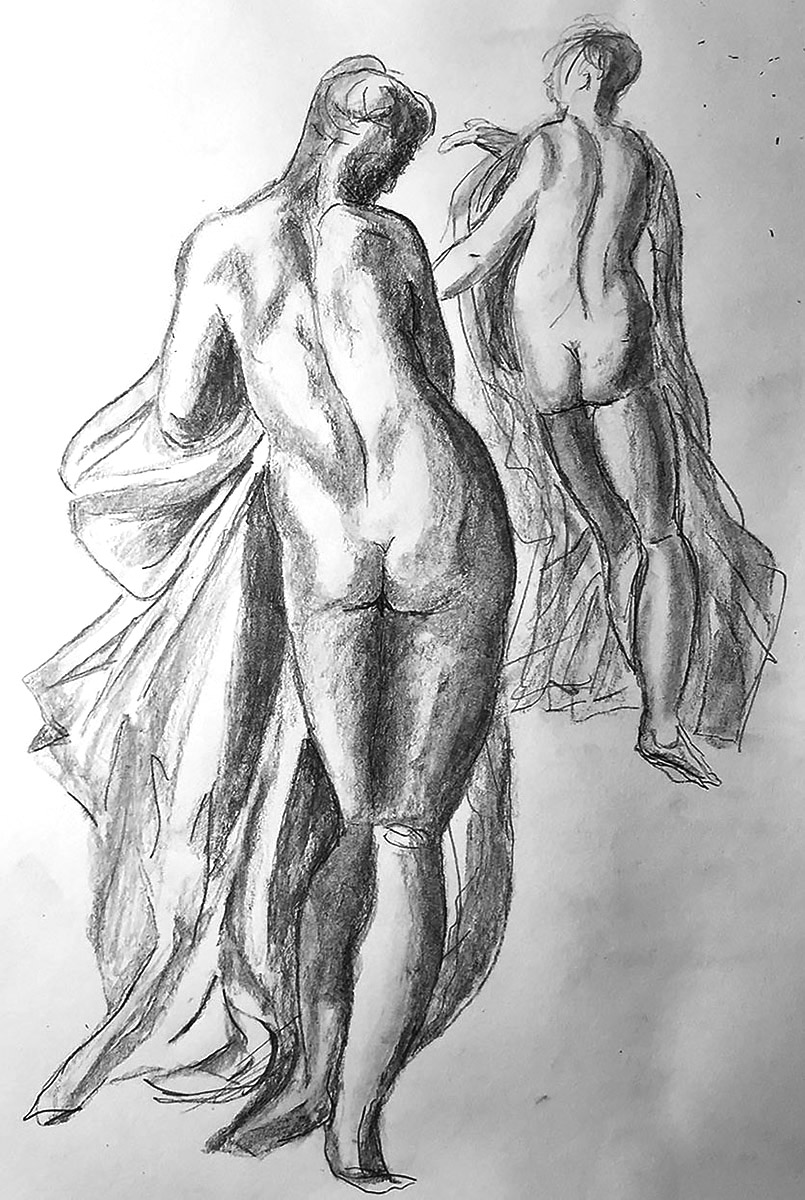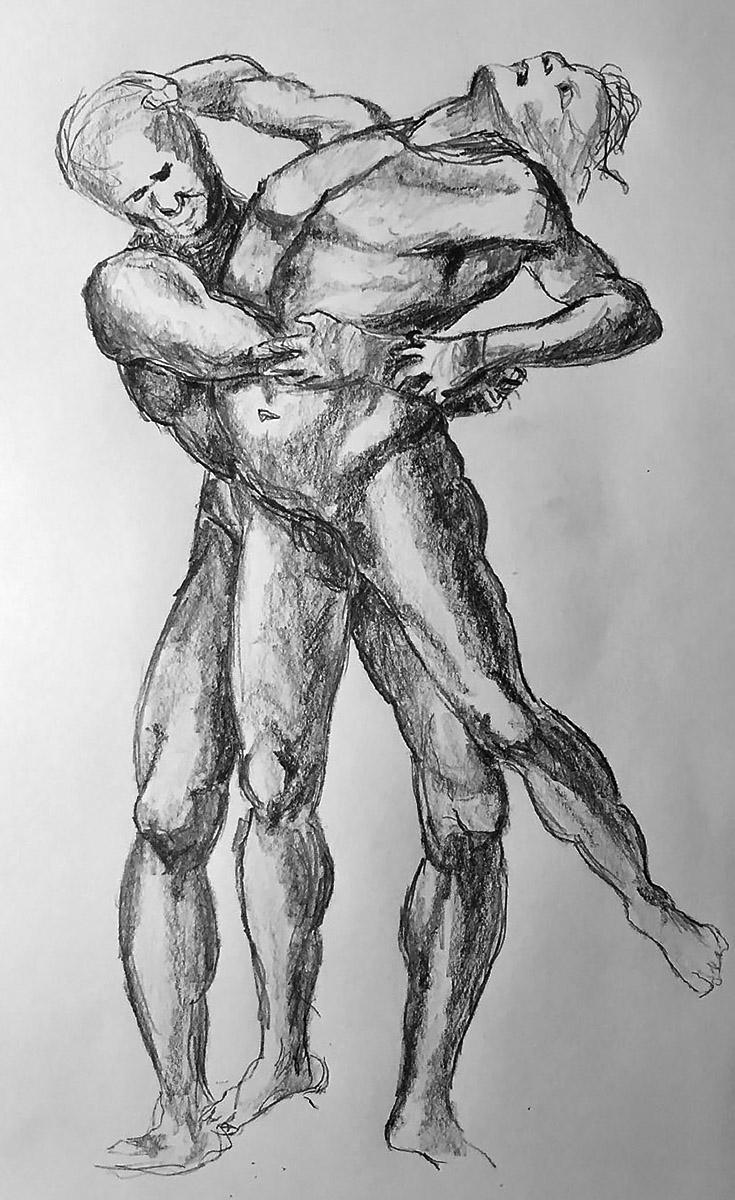
This next post is a graphite drawing of Hercules and Antaeus copied from a work in black chalk by Luca Signorelli. Signorelli who’s full name is Luca d’Egidio di Ventura de’ Signorelli, was referred to as Luca da Cortona because he was from, you guessed it, Cortona, Italy. According to my research, Signorelli was born sometime between 1445 and 1450. So apparently the record keeping was not very good in Cortona or women spent incredibly long periods in labor. Signorelli died in Cortona on October 16, 1523, so apparently record keeping greatly improved during his lifetime or perhaps deaths were considered more important than births. I’m not trying to judge anyone’s culture. I’m just trying to keep an open mind. I mean they know the exact date of his death but… I’m going to have to move on from this.
Luca Signorelli was known for his frescoes, most notably the series based on the end of the world in the Orvieto Cathedral. These frescoes were even praised by Michelangelo, whom he greatly admired. Signorelli worked in an intense and dramatic style. Raphael admired and was influenced by his work.
I’m just trying to keep an open mind.
Now let’s talk about Hercules and Antaeus of the ever popular Greek mythology. I have said this before but it bears repeating. I often start to doze off when I read or write or even think about any type of mythology so I’ll try to keep this brief. The giant Antaeus was the son of Gaea, the goddess of earth and Poseidon, the god of the sea. Antaeus was considered invincible due to the fact that his strength was renewed when his feet touched the ground. He would often challenge strangers to fight him. Kind of like those guys that still live at home and take martial arts classes all day then go out at night and pick fights with people. You know the type. Getting back to Mythology. One day Antaeus got into a fight with Heracles, who figured out that Antaeus got his strength from touching the earth. So Hercules lifted Antaeus from the Earth then crushed him to death. Wild stuff indeed.

